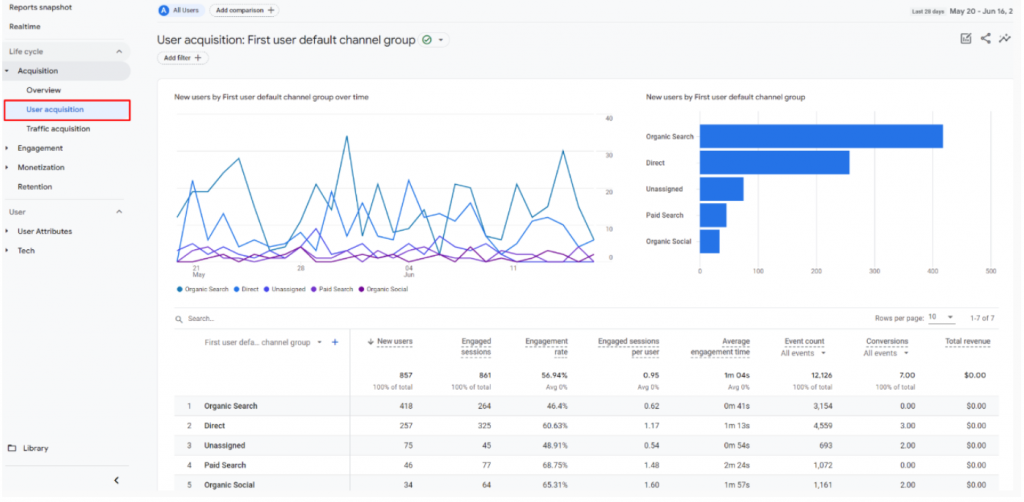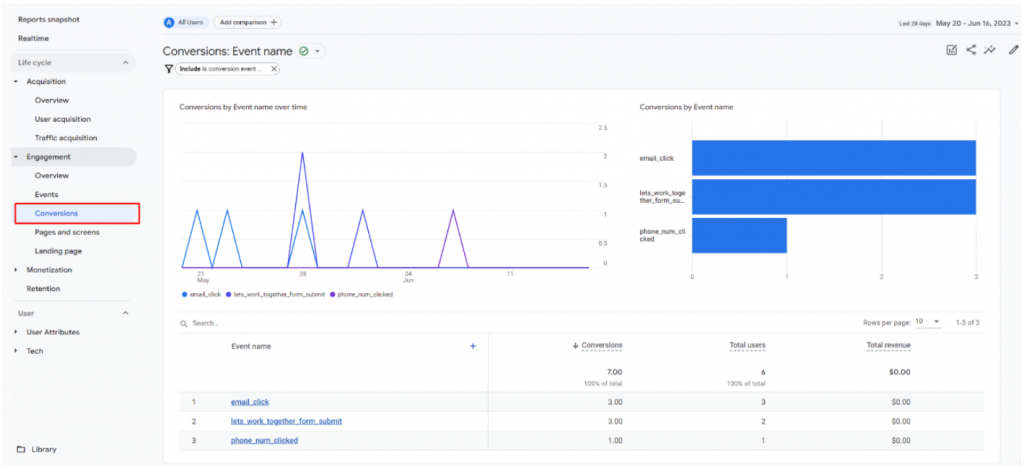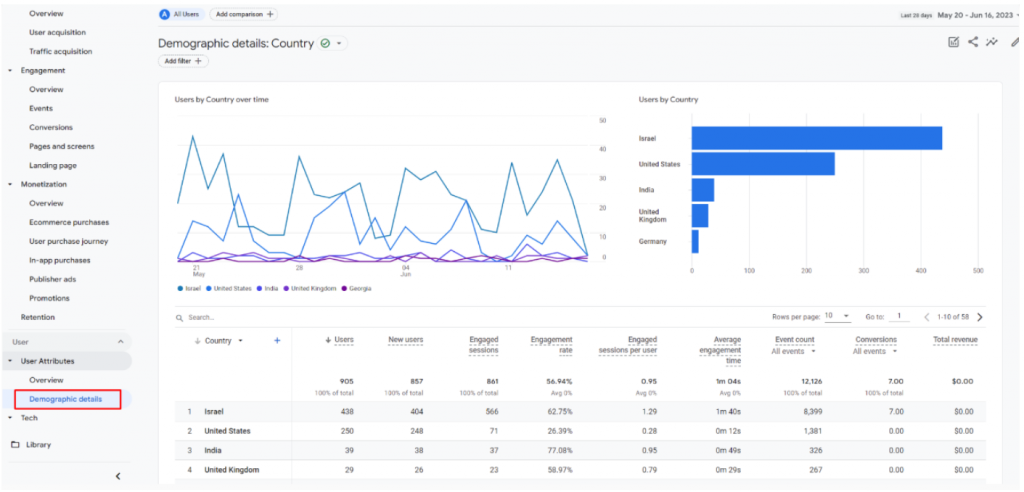
In today’s ever-changing world of data and user privacy, B2B tech startups face a big challenge: understanding how customers interact with their businesses across multiple platforms.
In this blog post, we unveil the essential details of GA4 and provide invaluable insights on proactively adapting to this transition. Our comprehensive guide equips B2B tech startups with the knowledge they need to harness the power of GA4 as their default analytics platform.
We have compiled a comprehensive guide that covers everything you need to know as a B2B tech startup about the new Google Analytics – GA4.
Let’s dive in!
Understanding Google Analytics 4

Google Analytics 4 represents the cutting-edge advancement of Google’s leading web analytics platform.
Leveraging next-generation technologies such as artificial AI, ML, and advanced data modeling, GA4 unlocks unprecedented insights that were previously unattainable.
Let’s briefly recap the previous versions of Google Analytics before GA4:
Classic Google Analytics: This initial version utilized the ga.js JavaScript library, which has now transitioned into legacy code.
Universal Analytics (UA) (also known as UA or GA3): In the third version, Google adopted the gtag.js JavaScript library, which is widely employed by marketers today.
GA4, the latest version, continues to leverage the gtag.js library. However, it is built upon a novel measurement model referred to as the “Event+Parameter” model, as introduced by Google.
Here’s what you need to know about the transition:
After July 1, 2023, your current UA properties will no longer collect new sessions/hits or analytics data.
If you still didn’t upgrade to GA4 by the mentioned date, the Google Analytics team will automatically create a new GA4 account for you (but that is not what you want in the long run).
In the next 6-12 months, all UA properties and their associated data and reports will be permanently deleted.
It is crucial to proactively adapt to GA4 to ensure a seamless continuation of your analytics capabilities and prevent any loss of valuable data on your startup website.
What’s the Difference Between UA and GA4?

Let’s explore the key differences between GA4 and UA.
The transition from Sessions to Events:
UA relies on a session-based model, grouping interactions within specific timeframes. On the other hand, GA4 adopts an events-based model, offering a more granular approach. This includes additional information such as page titles and user locations, facilitating more precise reporting.
Goals Transform into Conversions:
GA4 replaces UA’s familiar “goals” terminology with “conversions” (we will cover the new terminology in a separate section). Moreover, GA4 allows an extension from the previous limit of 20 goals to unlimited events and up to 30 conversions. Conversions are now closely linked to events, emphasizing the importance of setting up GA4 alongside any existing Google Analytics account.
New Dashboard UI/UX:
GA4 presents a refreshed homepage featuring customizable views and widgets. The data is consolidated into a central overview, with topic-specific data elegantly presented on distinct scorecards. This user-friendly interface offers flexibility in modifying scorecards’ size, shape, and placement to suit individual preferences. But, most people who used UA will have a hard time at the beginning with the new UI of GA4.
Must-Know Google Analytics 4 Terms Explained
Engagement Rate
The metric known as Engagement Rate is derived by dividing the number of Engaged Sessions by the Total number of sessions. To illustrate, if there were 5 engaged sessions out of a total of 10 sessions, your engagement rate would equate to 50%.
Average Engagement Time
Average engagement time takes the place of the average time on site metric from UA. The calculation for average engagement time involves dividing the total active time of your site by the number of users. You can’t compare it to the average time on site from the UA reports.
Conversion
A Conversion is recorded whenever a user triggers an event that has been defined as a conversion. This event can book a demo form completion, click on an email, or any other predefined action. On UA, we used the term “goal”.
Data Stream
A Data Stream serves as a conduit for collecting data within your reports. Creating one or multiple Data Streams for each of your GA4 properties is possible.
Default Channel Grouping
Google Analytics automatically organizes Source and Medium into channels through a process known as Default Channel Grouping. For instance, if someone visits your website via a Linkedin link, the Source would be labeled as ‘LinkedIn’ and the Medium as ‘referral’. This combination of Source and Medium is automatically classified as ‘Social Organic’ within your reports.
Website Traffic Measurement with GA4
To effectively gauge web traffic using GA4, it is essential to grasp the concept of GA4’s acquisition reports, which are categorized into two primary groups serving different purposes:
User Acquisition Report: This comprehensive report provides valuable insights into how users were initially acquired and captured on the website.
Traffic Acquisition Report: Operating at the session level, this report assists in identifying the specific campaign from which each session originates.
As a result, businesses, whether B2B, e-commerce, or SaaS, can leverage these reports to analyze the sources of users or traffic on their websites.
By default, the GA4 presents an extensive list of events recorded on our website. Although they may appear beneficial, it is essential to note that not all events hold equal significance and it’s better to create new events based on your marketing needs.

Important Views on GA4 for Your Company
User Acquisition

The User Acquisition report in GA4 gives you a detailed understanding of which channels where the users are coming from (1st source of interaction with the website), which is crucial for optimizing your marketing channels.
Conversions

The Conversions report can be a powerful tool for understanding which actions are being taken by users, how often, and by whom. You can set up the conversion yourself or use an outsource marketing person. You will not see the conversions if you don’t add any. These conversions are generally actions that you want users to complete, such as signing up for a newsletter, booking a demo, or downloading a resource.
Page and Screens

B2B startups can use these insights to understand what pages users view, how long they stay, and what features they engage with.
Demographic Details

This view helps understand the profile of the users interacting with your website. It provides data about the countries of users, which can inform persona development and marketing strategies.
What You Need to Work on Besides GA4 Settings
Within the realm of analytics, Google Analytics 4 stands tall as a robust tool, offering B2B tech startups invaluable knowledge about their visitors. Yet, insights alone fall short of propelling engagement and conversions. What truly shapes success is a marketing strategy that harnesses these insights, channeling them through diverse marketing channels.
To translate these insights into tangible outcomes and optimize marketing ROI, B2B tech startups must embrace a digital marketing solution capable of applying data-driven wisdom across multiple touchpoints. They need to invest in building the traffic/conversion to their website from paid advertising, social media marketing, organic search marketing, and email marketing traffic channels.



